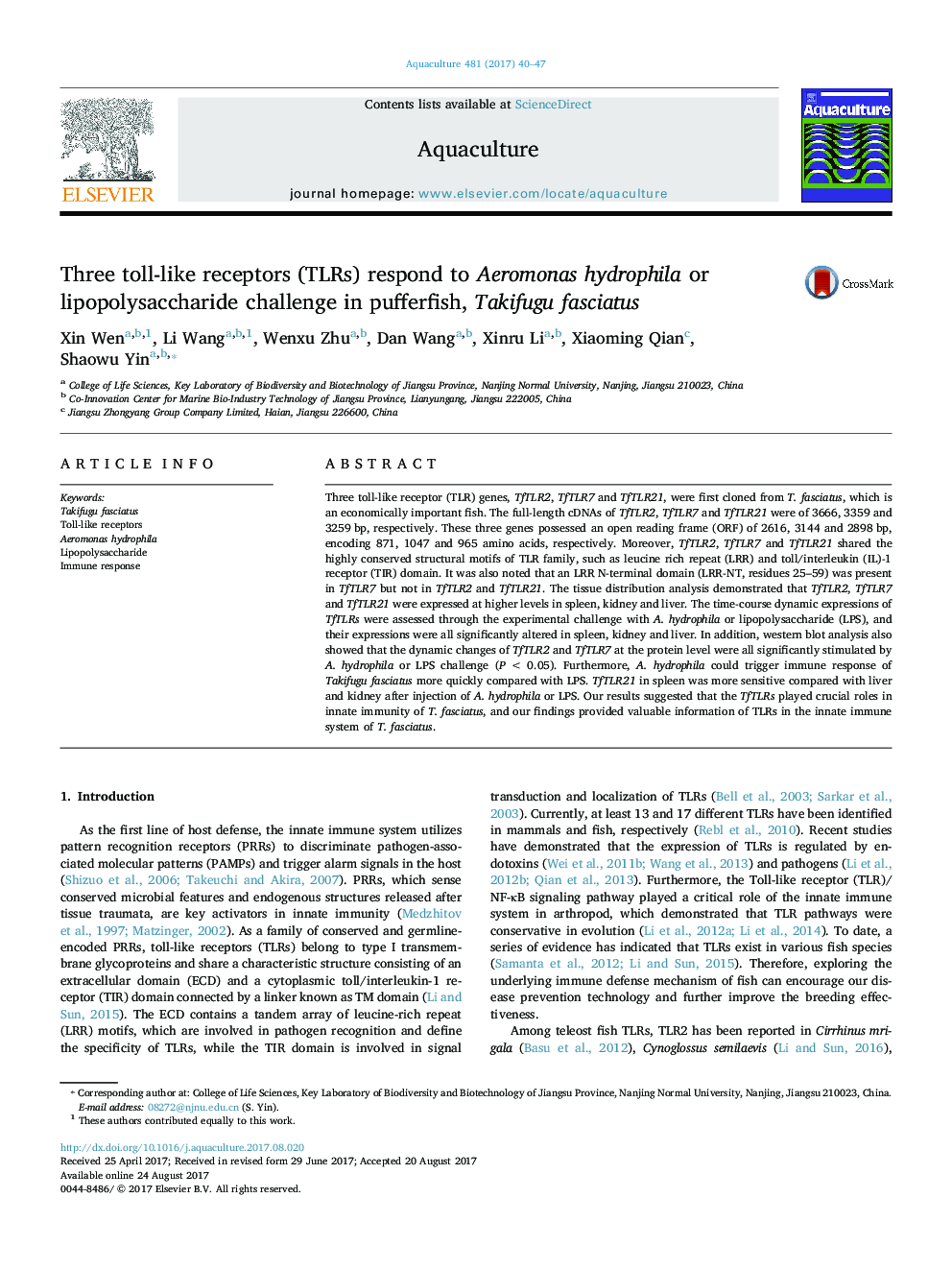| Article ID | Journal | Published Year | Pages | File Type |
|---|---|---|---|---|
| 5538945 | Aquaculture | 2017 | 8 Pages |
Abstract
Three toll-like receptor (TLR) genes, TfTLR2, TfTLR7 and TfTLR21, were first cloned from T. fasciatus, which is an economically important fish. The full-length cDNAs of TfTLR2, TfTLR7 and TfTLR21 were of 3666, 3359 and 3259Â bp, respectively. These three genes possessed an open reading frame (ORF) of 2616, 3144 and 2898Â bp, encoding 871, 1047 and 965 amino acids, respectively. Moreover, TfTLR2, TfTLR7 and TfTLR21 shared the highly conserved structural motifs of TLR family, such as leucine rich repeat (LRR) and toll/interleukin (IL)-1 receptor (TIR) domain. It was also noted that an LRR N-terminal domain (LRR-NT, residues 25-59) was present in TfTLR7 but not in TfTLR2 and TfTLR21. The tissue distribution analysis demonstrated that TfTLR2, TfTLR7 and TfTLR21 were expressed at higher levels in spleen, kidney and liver. The time-course dynamic expressions of TfTLRs were assessed through the experimental challenge with A. hydrophila or lipopolysaccharide (LPS), and their expressions were all significantly altered in spleen, kidney and liver. In addition, western blot analysis also showed that the dynamic changes of TfTLR2 and TfTLR7 at the protein level were all significantly stimulated by A. hydrophila or LPS challenge (PÂ <Â 0.05). Furthermore, A. hydrophila could trigger immune response of Takifugu fasciatus more quickly compared with LPS. TfTLR21 in spleen was more sensitive compared with liver and kidney after injection of A. hydrophila or LPS. Our results suggested that the TfTLRs played crucial roles in innate immunity of T. fasciatus, and our findings provided valuable information of TLRs in the innate immune system of T. fasciatus.
Related Topics
Life Sciences
Agricultural and Biological Sciences
Aquatic Science
Authors
Xin Wen, Li Wang, Wenxu Zhu, Dan Wang, Xinru Li, Xiaoming Qian, Shaowu Yin,
